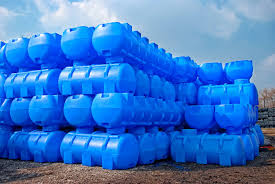Rotomolding, or rotational molding, is a manufacturing process used to make hollow plastic components. It’s a versatile and cost-effective method that produces high-quality, sturdy products that are consistent in wall thickness. This process is widely utilized across various industries, including industrial, automotive, and consumer goods.
How Rotomolding Works
Rotomolding involves a few essential steps that include loading the mold, heating the mold, rotating it, cooling it, and demolishing. The process begins with placing a pre-measured quantity of plastic powder or resin into a mold that is two-part. The mold is then closed and then heated, usually by heating it in an oven. As the mold warms, it begins to rotate across multiple axes, usually in a biaxial and a vertical direction. This rotation causes the plastic powder to melt and evenly cover the surface within the mold.
Once the plastic has evenly covered the mold, and fused together, the mold is typically cooled using water or air. The cooling process solidifies the plastic to its final form. The mold is then removed and the new piece is removed. The result is a seamless hollow part with a uniform wall thickness and excellent quality structural integrity.
Advantages of Rotomolding
One of the primary advantages of rotomolding is its capability to create large complex, intricate shapes with no joints or seams. This method is particularly efficient in the creation of items like tanks, bins as well as playground equipment. Additionally, rotomolding allows for the use of a wide range of materials, including different types of plastics like polypropylene, polyethylene, and nylon.
Rotomolding is also known for its durability and impact resistance. It allows the production of parts that have an the same thickness of wall, thus reducing the possibility of weak points or failures. It’s also a good option for medium to large production runs because of the relatively low costs for tooling in comparison to other techniques such as blow or injection molding.
Applications of Rotomolding
Rotomolding is utilized in a variety of applications due to its flexibility and the strength of final products. Some of the most popular applications are:
Industrial Containers Rotomolding is ideal for manufacturing large storage tanks and containers used for chemical processing, agriculture, or water treatment.
Consumer Goods: Items like coolers, outdoor furniture and toys are usually manufactured by this method.
Auto Parts: Rotomolding can be used to create durable and lightweight components such as fuel tanks and protective housings.
Conclusion
Rotomolding stands out as an effective and flexible method for producing high-quality, hollow plastic components. Its capability to produce complex forms with uniform thickness along with its efficiency and durability makes it an ideal choice for different industries. Whether for industrial, consumer or automotive purposes, understanding the fundamentals of rotomolding is helpful in making informed decisions about manufacturing requirements and capabilities.

No Responses